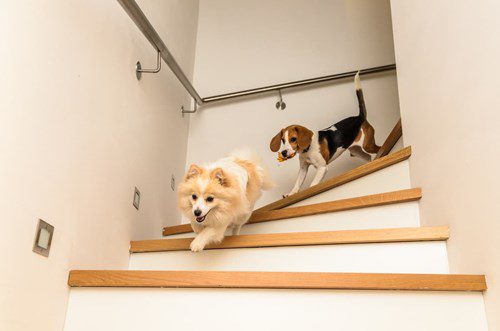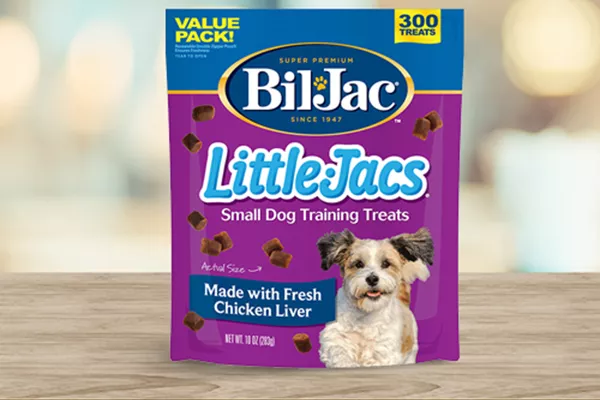Does your dog ever get a case of the zoomies? Even if you’re not familiar with the term, you’ve probably seen your furry friend bolt around the house at top speed, zipping from room to room with wild energy. The dog zoomies are real… but are they a good thing?
It turns out that the occasional zoom session is a perfectly normal behavior for your dog. However, you might still be wondering: what are the zoomies, why do dogs get them, and what should you do when they strike? We’ve got you covered with answers to all these questions and more.
What Are the Zoomies?
The zoomies, also known as frenetic random activity periods (FRAPs), are sudden bursts of high-energy activity where dogs run in circles or zigzag around the house. These episodes typically last a few minutes, and then it’s back to normal as if nothing happened. While the exact cause is still a bit of a mystery, experts believe that dog zoomies are a natural way for dogs to release pent-up energy.
Why Do Dogs Get the Zoomies
There are a few reasons your dog might get the zoomies, including:
- Energy Release: The primary reason for zoomies is burning off excess energy. After a long nap, bath, or even a grooming session, dogs might feel the need to let loose.
- Emotional Expression: Zoomies aren’t just about exercise – they often reflect how your dog feels. Whether it’s excitement, happiness, or even stress relief, running around is a way for your dog to express its emotions.
- Time of Day: Many dogs tend to get the zoomies between late afternoon and late evening, possibly linked to natural energy cycles.

Are Certain Dogs More Prone to the Zoomies Than Others?
The answer to this question is both yes and no. Naturally energetic dogs are more likely to zoom around than their laid-back, low-energy counterparts. Similarly, smaller and medium-sized dogs are often more prone to these bursts of energy than larger breeds. Let’s break down some of the factors that determine whether your dog is a zoomer, or a snoozer:
- High-Energy Breeds: Naturally active dogs, like Border Collies, Jack Russell Terriers, and Australian Shepherds, are more likely to zoom around. These breeds thrive on physical and mental stimulation, and if they don’t get enough exercise, zoomies are a way to let that extra energy out.
- Size and Build: Smaller and medium-sized dogs tend to be more prone to zoomies than larger breeds. However, big dogs aren’t exempt from a good sprint around the yard!
- Age Matters: Younger dogs and puppies typically experience more frequent zoomies due to their naturally high energy levels. As dogs age, these bursts of activity might become less common, but older dogs can still enjoy a good run every once in a while.
- Individual Personality: Remember, every dog is unique. While some may zoom regularly, others may never exhibit this behavior. It’s just one of the many ways dogs show their personalities.
What Should I Do When My Dog Has a Case of the Zoomies?
In short, let the zoomies happen. These energy bursts are a positive experience and are generally safe for your dog, so there’s no need to step in and stop the fun. It’s good to let your dog just be a dog.
However, there are some steps you can take to make the situation safer.
Encourage dog zoomies when possible
While you don’t want to interfere, you can still join in on the fun:
- Use a Designated Area: If possible, encourage zoomies in a secure outdoor space like a backyard or a dog park. This provides more room for your dog to run around without the risk of indoor obstacles. You can take it one step further by setting up an agility course for your furry friend to speed through.
- Engage in a Game: Try playing a game of fetch or chase right before the zoomies start to channel your dog’s energy into a structured activity.
- Practice Commands: Incorporate basic training commands like “sit” or “stay” before releasing your dog for a zoom session. This can help manage excitement levels and provide a bit of mental stimulation.

Prepare your place
While a zoom session is generally a good thing, you may want to take some precautions. For example, dogs that tend to get a little reactive may nip at things or people if they’re nearby. In this case, keep some distance and make sure that any kids or other people know not to interact with your dog while he’s zooming.
You also want to address dangerous obstacles and other items. For example, a chair that’s pulled out could make for a great launchpad to the dining room table. Move any fragile items or shorter pieces of furniture that a bigger dog may run into or knock over. A little preparation can help dog-proof your home in case of an unexpected zoom session.
Grow Closer to Your Dog One Zoom at a Time
It never hurts to have a good zoom every once in a while. Once your dog has spent their energy and slowed back down to normal speed, it’s business as usual for both you and your buddy – at least until the next time your dog gets a case of the zoomies.
Want to learn more about how you can continue to love and care for your favorite furball? Join our Best Friends Club today to receive our exclusive email newsletter full of informative articles, training tips, and members-only discounts on Bil-Jac dog food, treats, and other products.




